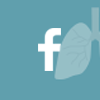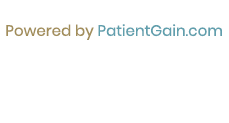When is a Skin Rash a Medical Emergency?
At Allergy & Asthma Care, our board-certified physician, Joel H. Selter, M.D., is dedicated to providing guidance on skin health. While most rashes are not serious, some can be a sign of a medical emergency. Dr. Selter and his team can help you recognize critical symptoms, such as a rash spreading rapidly, forming blisters, or being accompanied by a fever or difficulty breathing. For more information, contact us or book an online appointment. We have convenient locations to serve you in Suffern, NY, and Monroe, NY.


Table of Contents:
When is a fever combined with a rash a sign of a medical emergency?
What does a rash that is accompanied by difficulty breathing, a tight throat, or wheezing indicate?
What does a rash that has blisters, looks like open sores, or is peeling away from the body mean?
Are there specific colors or appearances of a rash, such as a purple or bruise-like rash, that are a cause for immediate concern?
We understand that patients and families affected by allergies, asthma, and immunologic conditions may worry when new symptoms arise. A fever combined with a rash is a particularly important sign to monitor, as it can occasionally signal a serious medical problem requiring immediate attention.
While many rashes with fever are caused by mild viral illnesses, certain patterns and symptoms are more concerning—especially for those with underlying allergic or immune conditions. If a rash appears suddenly and spreads quickly, particularly if it looks like small, red or purple spots that do not fade when pressed (known as petechiae or purpura), this may indicate a life-threatening infection or, more rarely, a severe allergic reaction. Emergency evaluation is also needed if you notice:
● Difficulty breathing or wheezing
● Swelling of the face, lips, tongue, or throat (possible signs of anaphylaxis)
● Severe headache, neck stiffness, confusion, or seizures
● Persistent vomiting, pale or mottled skin, or rapid heartbeat
● Extreme lethargy or unresponsiveness
Infants with a bulging or sunken soft spot on the head, or inconsolable crying, should be evaluated urgently.
If you or your child has a very high fever (above 104°F/40°C), is immunocompromised, under three months old, or has a chronic medical condition such as asthma or allergies, it’s especially important to seek prompt medical attention. Additionally, if symptoms develop after a new medication (raising the risk of severe allergic reactions like Stevens-Johnson syndrome), after recent travel, or after exposure to someone with a serious infection, do not delay seeking care.
We want our community to be aware that a rash, especially when it appears alongside symptoms such as difficulty breathing, a tight sensation in the throat, or wheezing, may signal a serious allergic reaction called anaphylaxis. Anaphylaxis is a true medical emergency that can escalate rapidly and become life-threatening.
This severe reaction occurs when the immune system overreacts to an allergen—such as certain foods, medications, insect stings, or environmental triggers. Besides a rash (often appearing as hives or redness), other warning signs may include swelling of the face or lips, a sensation of the throat closing, hoarseness, a rapid or weak pulse, dizziness, and even loss of consciousness.
At Allergy & Asthma Care Rockland, we emphasize the importance of recognizing these symptoms early. If you or a loved one develops a rash along with any difficulty breathing, throat tightness, or wheezing, it is critical to seek emergency medical care without delay. Immediate treatment with epinephrine and professional support can be lifesaving.
Our team frequently evaluates rashes and skin reactions that may be related to allergies, asthma, or other medical conditions. A rash that features blisters, open sores, or areas where the skin is peeling away can sometimes indicate a serious allergic reaction or underlying medical problem. What to Look For:
● Blisters: Small, fluid-filled sacs on the skin that may burst and form open sores.
● Peeling or Sloughing Skin: Indicates damage or death of the top layer of the skin.
These findings can be associated with severe allergic reactions (such as drug allergies), infections, or certain autoimmune conditions. Some possible causes include:
● Severe allergic drug reactions such as Stevens-Johnson syndrome or toxic epidermal necrolysis—both require immediate medical attention.
● Contact dermatitis, which can occur after exposure to allergens or irritants like certain plants, chemicals, or medications.
● Viral infections (e.g., herpes simplex, chickenpox) and bacterial infections (e.g., impetigo).
● Autoimmune skin conditions such as bullous pemphigoid.
If you notice a rash with blisters, widespread peeling, or open sores—especially if the rash is accompanied by fever, swelling of the face or mouth, difficulty breathing, or severe pain—seek emergency care right away. These symptoms can sometimes signal a severe allergic reaction (anaphylaxis) or a rapidly progressing skin disorder.
We want our patients and their families to be aware of when a rash may signal a serious medical concern—especially for those who have allergies or asthma, as some rashes can indicate severe allergic reactions. Certain colors and appearances of a rash are considered warning signs and require prompt medical attention.
If you or your child develops a rash that appears purple, red, or looks like a bruise—particularly if it does not fade (blanch) when you press on it—this could be a sign of bleeding under the skin, known as purpura or petechiae. These types of rashes may be associated with serious conditions, such as blood clotting disorders, infections like meningococcemia, or even meningitis.
Additionally, if a purple or bruise-like rash develops suddenly, spreads quickly, or is accompanied by symptoms such as fever, headache, neck stiffness, confusion, or trouble breathing, seek emergency medical care immediately.
For our patients with allergies and asthma, it’s also important to know that any rash accompanied by swelling of the face or throat, difficulty breathing, or symptoms of shock could signal a life-threatening allergic reaction (anaphylaxis). This is a medical emergency—call 911 or go to the nearest emergency room right away. For more information, call us or book an online appointment. We serve patients from Suffern NY, Monroe NY, New City NY, Spring Valley NY, Monsey NY, Airmont NY and Mahwah NJ.

Additional Family Care Services You May Need

Additional Family Care Services You May Need





